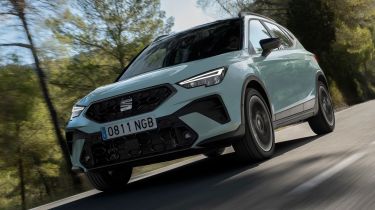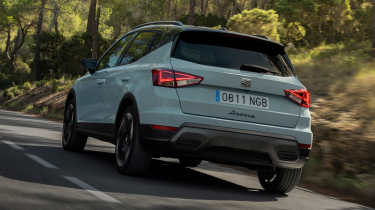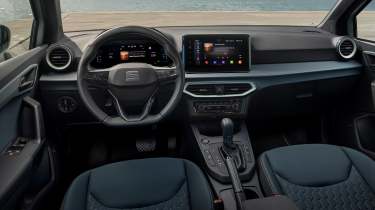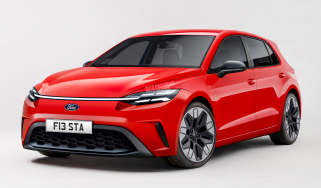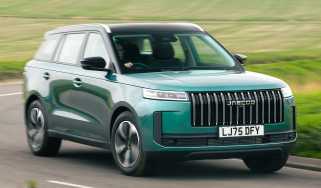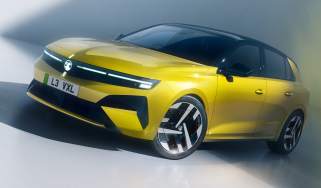New SEAT Arona 2025 facelift review: a difficult game of spot the difference
The SEAT Arona has been updated for 2025, but the changes are hard to spot and that's not a good thing

Verdict
It seems odd that the SEAT Arona has been given such a mild facelift considering the size of the small SUV market, and how old the car is now. Not much has changed inside or out, but the Arona serves as a reminder of how SEAT and the wider VW Group really hit the mark for cabin ergonomics a few years ago. Incoming mild-hybrid tech should provide a more competitive edge to the Arona when it arrives.
SEAT has breathed new life into its range recently, announcing mid-life updates for both the Ibiza supermini and Arona small SUV. But we’ve been made to wait – the revised cars were first teased two years ago.
The Arona arrived in 2017, designed to tackle the all-important crossover class and going up against cars like the Nissan Juke and Vauxhall Mokka. The segment has exploded in recent years, welcoming the big-selling Ford Puma, plus other models from the VW Group including the Volkswagen T-Cross and the Skoda Kamiq. The car was first facelifted in 2021, but these changes aim to focus on design, while also throwing in some extra kit as standard.
With SEAT repositioning itself as the Group’s ‘entry brand’, pricing will be the key metric to determine how popular the new Arona (as well as the Ibiza) is in time. While it’s not been officially announced, we’ve been told that the SUV will start from roughly £23,000, with flagship models maxing out at around £28,500, meaning like-for-like savings of up to £1,500. The new Arona will ditch the current entry-level ‘S’ and range-topping ‘XCellence’ trims; SE now sits below SE Technology, with First Edition and FR Sport cars completing the range.
Used - available now

2024 Seat
Arona
18,413 milesManualPetrol1.0L
Cash £13,105
2024 Seat
Arona
24,220 milesAutomaticPetrol1.0L
Cash £16,649
2021 Seat
Arona
31,129 milesManualPetrol1.0L
Cash £10,069
2024 Seat
Arona
23,789 milesManualPetrol1.0L
Cash £13,699Visual changes include new LED headlights, new bumpers, a reshaped grille and a selection of 16 and 18-inch alloy wheels, while FR Sport cars get bucket seats and a unique bodykit.
Standard kit across the range now includes a cooled wireless smartphone charger that is apparently three times more powerful than before, plus a six-speaker sound system and a perforated leather steering wheel.
Jump inside and you’ll find a cabin that’s familiar to anyone who’s sat in a VW Group car over the past decade. It might be old and a bit dull, but don’t think that’s a slight on the Arona’s overall interior, because it has plenty of positives.
First off, the ergonomics. Aside from the slightly higher driving position and more upright windscreen, the layout is the same as you’ll find in the Ibiza. The physical controls on the steering wheel, plus the bank of controls low down on the dash, are super simple to use and feel sturdy. They’re significantly easier to operate than the haptic controls Volkswagen puts in its more modern cars, for sure.
Entry-level Arona SE cars feature a 8.25-inch touchscreen, with higher-spec models getting a larger 9.2-inch screen instead. Both get a simple menu layout, which makes it intuitive to use on the move, though loading times for the various functions were slow at times. It’s easy enough to bypass the fairly dated interface, however, thanks to the fact Apple CarPlay and Android Auto connectivity are standard across the line-up.
An eight-inch or 10.25-inch ‘Digital Cockpit’ sits in front of the driver depending on spec, though we found nothing wrong with the smaller screen here as it places greater prominence on key functions like the rev counter and speedometer.
The Arona will continue to be offered with three turbocharged petrol engines before mild-hybrid power joins the range in 2027. Right now, there’s a 1.0-litre three-cylinder with either 94bhp or 114bhp, plus a choice of manual or automatic gearboxes. Then there’s our car, which is the 1.5-litre turbocharged four-cylinder with 148bhp – available exclusively with a seven-speed DSG automatic.
SEAT hasn’t changed the SUV’s technical underpinnings for 2026, so it feels familiar to drive. That engine is one of the best in the VW Group for its combination of performance and efficiency, especially when it's utilised in smaller models like the Arona. While we found it a little thrashy under hard acceleration (we’re looking forward to the quieter mild-hybrids), the SUV never felt short of oomph and the automatic box switches between gears smoothly.
The Arona remains one of the better small SUVs to drive when it comes to handling thanks to well-weighted steering and an ability to keep body roll mostly in check. The ride is still a bit of a bugbear; on the 18-inch wheels of our car, we noticed plenty of jiggles and imperfections – despite driving on what looked like relatively smooth roads in Ibiza.
As for practicality, things don’t change here either. The 400-litre boot is about on par with rivals, and so is overall interior space. If you’re seeking greater rear legroom the Kamiq’s slightly longer wheelbase will better cater to tall rear passengers.
Did you know you can sell your car through Auto Express? We’ll help you get a great price and find a great deal on a new car, too.
| Model: | SEAT Arona 1.5 TSI SE Technology |
| Price: | £24,500 (est) |
| Powertrain: | 1.5-litre 4cyl turbo petrol |
| Power/torque: | 148bhp/250Nm |
| Transmission: | Seven-speed auto, front-wheel drive |
| 0-62mph: | 8.4 seconds |
| Top speed: | 130mph |
| Economy/CO2: | 50.4mpg/128g/km |
| Size (L/W/H): | 4,154/1,780/1,529mm |
| On sale: | January 2026 |

